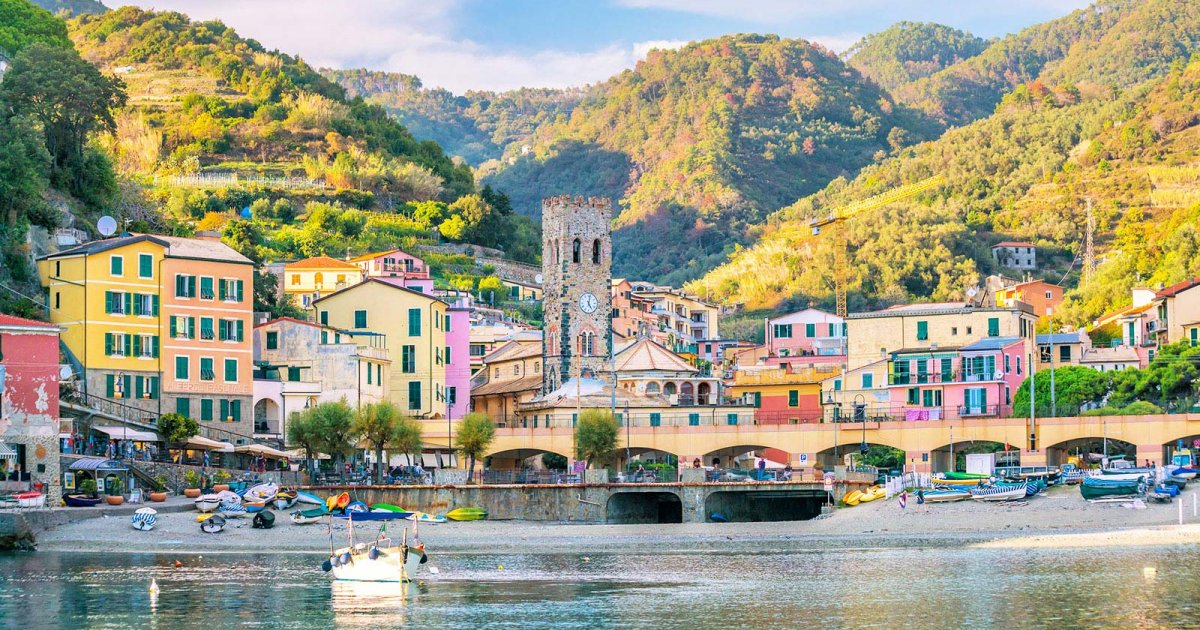MONTEROSSO, Monterosso
 Language: English / USA
Language: English / USA
Hi, my name’s Marcy, and I’m your personal guide. Along with MyWoWo, I’d like to welcome you to one of the Wonders of the World: Monterosso al Mare.
Monterosso is the largest of the villages that make up the Cinque Terre. Over the years, it has witnessed the construction of holiday homes and modern hotels and restaurants for guests drawn here by the beautiful white pebble beaches. A popular haunt for young people, Monterosso is also a favorite with seaside lovers in the summer.
The village is divided into two distinct parts by a short tunnel that runs through a small rock promontory known as Colle dei Cappuccini, after the Capuchin Convent there. Fegina is the more modern area, with beaches and the railway station, while the older, medieval part of Monterosso was founded around 900 AD.
The older part of the village is small, and is characterized by colorful porticos and traditional-style tower houses that climb up onto the hill amid flights of steps and delightful little streets, where you’ll find corners and small squares of rare beauty.
The church of San Giovanni Battista is an extraordinary example of Genoese Gothic architecture. It was built between the 13th and 14th centuries and later restructured during the Baroque period. The façade dates to 1307 and features the classic Genoese Gothic decoration of alternating white marble and black serpentine stripes. Above the entrance, you can see a splendid marble rose window, and on the lunette of the door, an eighteenth-century fresco depicting the Saint John’s Baptism of Christ.
In the triple-nave interior, the two-color stripe decoration of the façade can also be seen on the columns and the arches. You can admire two fine seventeenth-century paintings, and an altar from 1734.
If you have time, take the steps from the medieval part of the village up to the Capuchin Convent and enjoy the magnificent views from the outside. Inside the church of San Francesco, which also has a black and white striped façade, you can admire numerous paintings, including one of the Crucifixion attributed by some to the great Flemish painter Van Dyck.
Let me leave you with an interesting fact: the Fegina area of Monterosso was home to the greatest Italian poet of the 20th century, Eugenio Montale, who won the Nobel prize for literature and penned many works here, including his most famous, Ossi di Seppia (Cuttlefish Bones).



